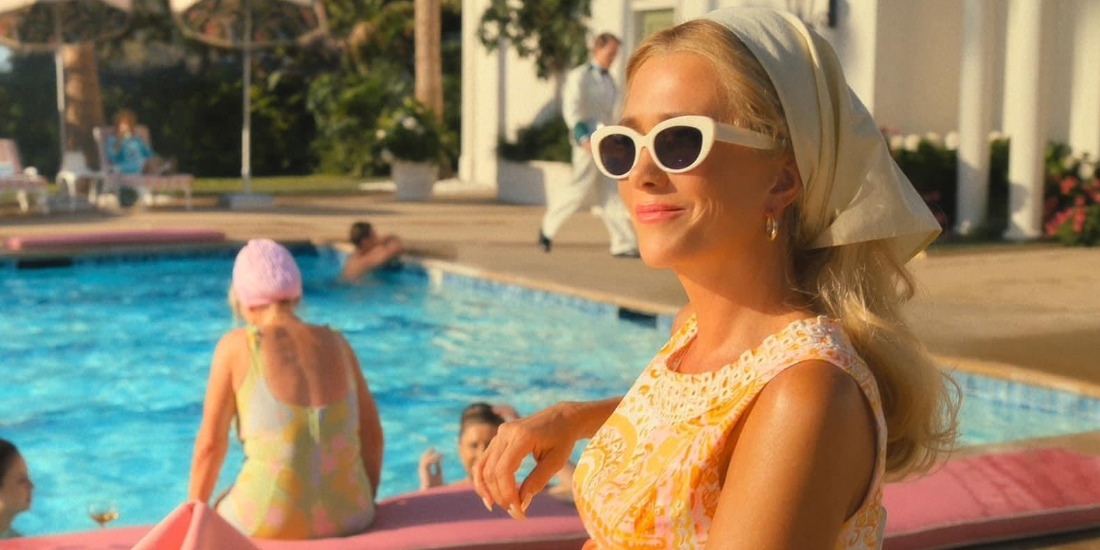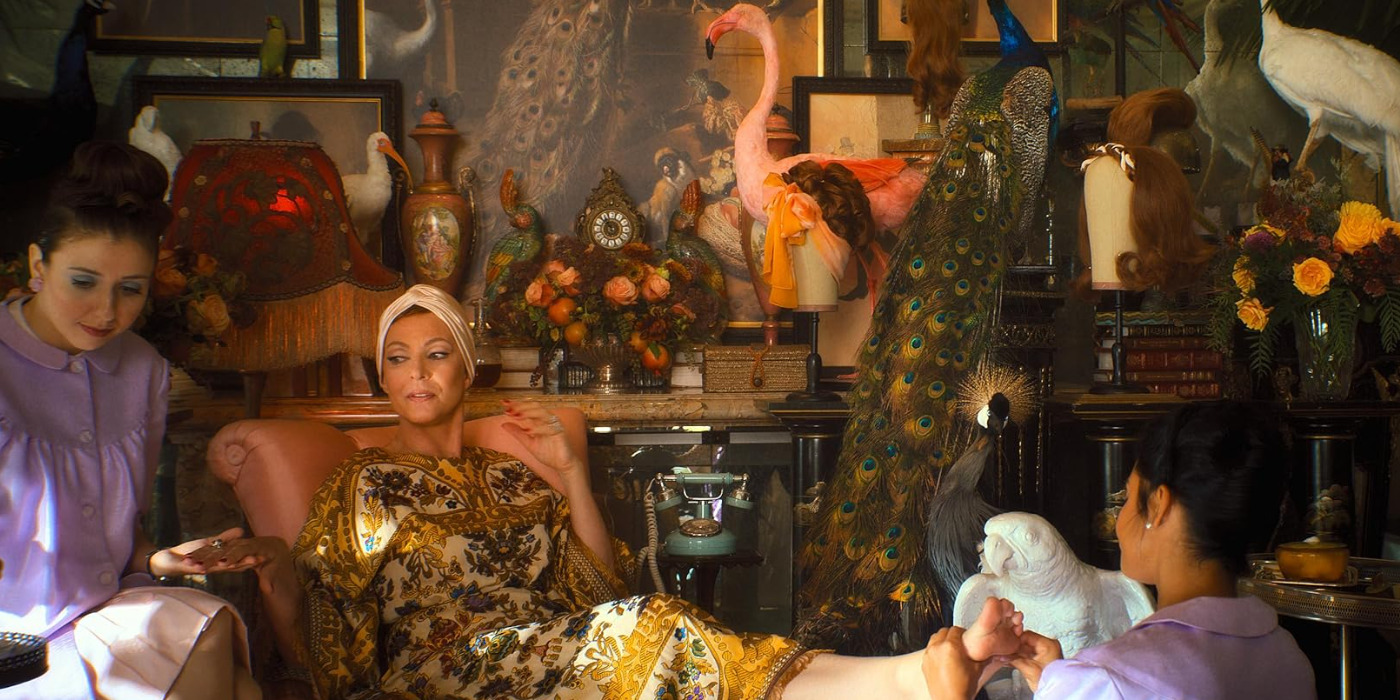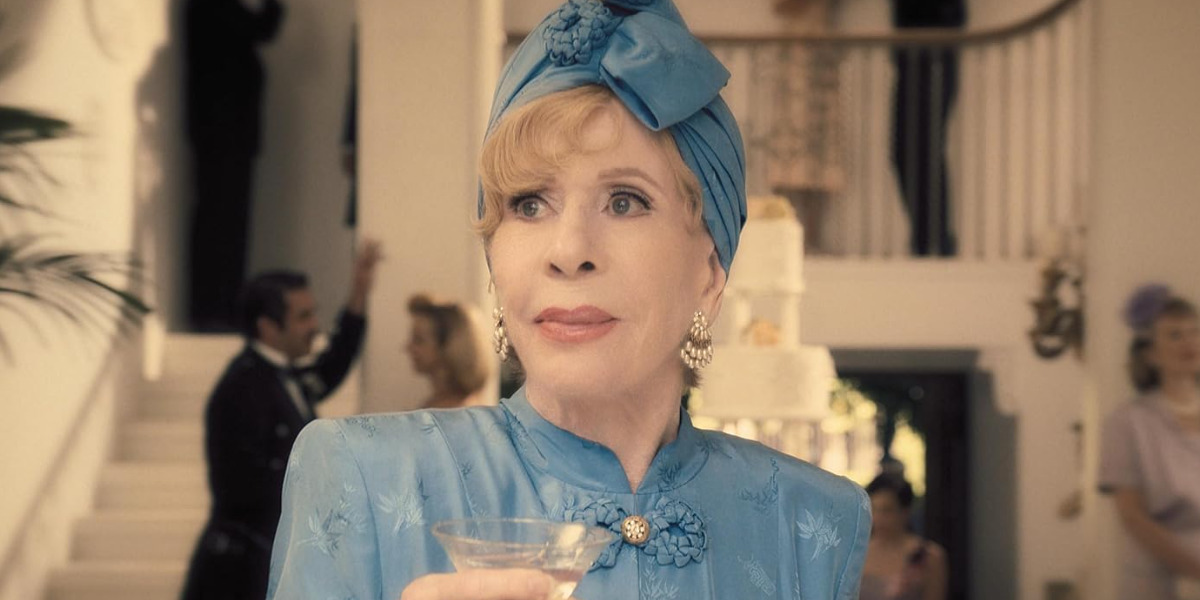‘Palm Royale,’ the Apple TV+ comedy series, transports the viewers into a world of highbrow glamor and drama that unfolds in the titular club, Palm Beach’s most exclusive establishment in 1969. The show revolves around Maxine Simmons, a former pageant girl who married Douglas of the affluent D’ellacourt family. Consequently, upon her arrival in Palm Beach, Maxine desperately seeks to be a part of the Palm Royale Club, which houses the most elite ladies of high society. Thus, once these ladies refuse to welcome Maxine with open arms, the woman realizes she must let her ambitions run free and fight for her spot at the overpriced table.
The show dives headfast into the end of the Swinging Sixties, exploring the higher echelons of society for all glitz and glitter alongside the nitty-gritty secrets. As such, whether the storyline focuses on the time’s class-driven complications or the rapidly growing feminist movement of the Palm Royale Club, the show’s main attraction remains at the narrative center. For the same reasons, viewers are bound to grow curious about the origins of the show as well as its central social club.
Palm Royale: An Adaptation of Mr. & Mrs. American Pie
The drama-driven storylines and characters featured in ‘Palm Royale’ are not based on a true story— instead, the show finds its basis in the 2018 fiction novel, ‘Mr. & Mrs. American Pie,’ by Juliet McDaniel. Still, rather than an exact replication, Abe Sylvia’s series only mines inspiration from the novel. The project found its inception with Actress Laura Dern and her creative collaborator, Jayme Lemons— executive producers on the show— who found inspiration in McDaniel’s work and wanted to bring it to the screen.

As such, Sylvia and his room of writers entered the project to mold it into its own shape. “When I read the book [‘Mr. & Mrs. American Pie’], I thought it was a wonderful jumping-off point for a story about a woman who will do anything to belong,” the director/writer told Awards Daily. Yet, despite his appreciation for McDaniel’s world and cast of characters, the filmmaker was interested in diverging in part from the source material to allow the show to chart its own path.
Thus, Sylvia decided to lift the novel’s protagonist, Maxine, from the character’s original Palm Springs background and drop her into the catty and vivid world of Palm Beach. In the latter, the filmmaker saw a seamless societal structure that allowed Maxine’s eager ambition— a key trait he recognized in the literary character— to pull its entire weight.
Therefore, despite its origins, the series ends up departing from the source material in some events, characters, or themes. “On this one [project] in particular, the character was so fertile and inspiring that it was like I didn’t want to limit myself to the events of the book,” said Sylvia. Nevertheless, the show holds onto a sense of realism by maintaining a relatable narrative center.
“I think the democratizing emotion and democratizing theme, this is a rarefied world, these are rarefied people. But you have to find the kernel that’s universal so that an audience identifies. And so, it is about belonging and finding a place for oneself,” Sylvia said in a conversation with Script. “This is about identity and belonging. And so, all of our stories vectored through that thematic lens, and it’s true of all the characters.”
Furthermore, the same, paired with the story’s general authenticity to the time period and its social complications, allows the show to form connections to reality that ground its dramatic narrative. Yet, the show remains a work of fiction since the storyline shares no other ties to reality apart from its connection to McDaniel’s literary work.
The Palm Royale Club: The Establishment’s Relation to Reality
Similar to the overarching story, which retains its fictionality, the Palm Royale Club is also a work of fiction without any real-life counterpart behind it. The location remains an intrinsic part of the eponymous show, usually becoming the base of operations for most of the storylines. The establishment stands as the object of Maxine’s desire, embodying the high society that the woman desperately wants to be a part of. Palm Royale also offers immense avenues for plot progression through the unique social dynamic present in the club’s walls.

While the details surrounding the Palm Royale Club themselves may not have a basis in reality, the general concept of exclusive high society clubs is a relevant historical element within the show. For instance, The Everglades Club, a controversial social Club in Palm Beach, established in 1919 and still in business, may remind viewers of the show’s titular establishment.
According to Everglades’ founder, Paris Singer, the club was an essential stamp to confirm one’s American aristocracy back in the day. Although the establishment’s status has wavered since its’ glory days, the latter time period certainly saw a glamorous time for the club, equivalent to Palm Royale’s depiction in the show.
In a Vanity Fair piece covering Palm Beach and its cultural aspect, a former frequent Palm Beach tourist, who wished to remain anonymous, spoke about the location and said, “Palm Beach always had a certain snobbery about it, but there was a gentility too. Ladies would go to their lunches, from the beach club to the Everglades to Ta-boo,” he concluded before discussing the place’s modern disposition. “But now it’s like they’ve been driven out and have had to recede into their homes.”
As such, one can garner the cultural significance that such clubs once held, especially in the 60s, when social issues and the counter-movements against them were on the rise. Consequently, even though the Palm Royale Club lacks a real-life basis, it informs the show’s era-appropriate authenticity.
Read More: Palm Royale: Where is the Apple TV+ Series Filmed?


You must be logged in to post a comment.